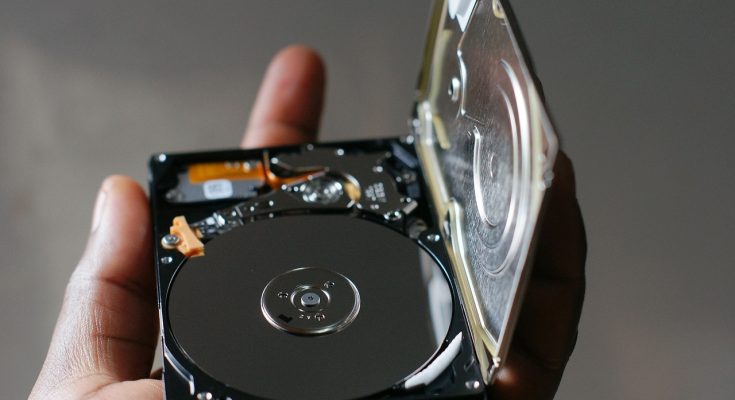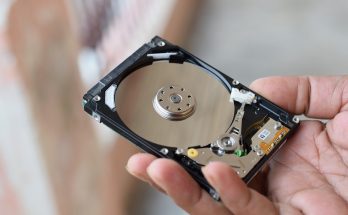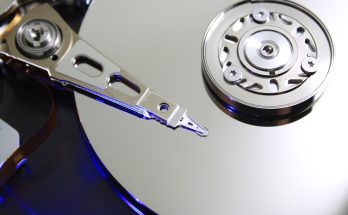Did you know 80% of data loss is due to hardware failures? Hard drive crashes and failing motherboards can mess up your computer’s file system. This leads to lost data and system problems. In this guide, we’ll look at common causes of file system corruption and how to fix them.
File system corruption happens when a file system’s internal structures get messed up. This can happen with NTFS, FAT, or EXT file systems. Many things can cause this, like hardware failures, software bugs, and sudden shutdowns.
Knowing what causes file system corruption helps protect your data. We’ll explore common causes and how to prevent and fix them. Stay with us to learn how to keep your data safe.
Understanding Hardware vs Software Causes of File System Corruption
File system corruption can come from many sources. These include both hardware and software problems. Knowing the different causes helps us fix and prevent these issues.
Hardware-Related Corruption Sources
Old storage media, like solid-state drives (SSDs), can cause problems. As SSDs age, they may get bad sectors. This can lead to data corruption.
Hard disk drives (HDDs) can also get damaged. This damage can cause disk errors. These errors can make the file system corrupt.
Software-Based Corruption Factors
Software bugs can sometimes corrupt data. These bugs can be found in apps or the operating system. They can cause minor or major problems with the file system.
Impact of Unexpected System Shutdowns
Unexpected shutdowns or power losses can also corrupt the file system. These power outages can mess up the data writing process. This can make it hard to fix the file system.
Using tools like smartctl can help check storage health. This can spot problems before they cause big issues. File systems like NTFS and ext4 also help. They keep a log of changes, making recovery faster and more reliable.
Common Signs and Symptoms of Corrupted File Systems
When your file system gets corrupted, you might see error messages or have trouble accessing data. It’s important to spot these signs early to fix the problem fast.
Error messages like “Windows has detected file system corruption on local disk C” are clear signs. They mean the system found a problem with how data is stored.
Having trouble with certain files or folders is another sign. If you can’t open, change, or delete data, it might mean your file system is broken.
System crashes or slow performance can also point to corruption. These issues can happen with many file systems, like NTFS, FAT, and EXT.
But, these signs can also mean other problems, like hardware issues or malware. So, finding the real cause is key to fixing it right.
| Common Signs of File System Corruption | Potential Causes |
|---|---|
| Error messages (e.g., “Windows has detected file system corruption on local disk C”) | Fragmented drives, system shutdowns, power surges, improper file handling |
| Inability to access files or folders (data inaccessibility) | Corrupted catalog files, multiple file copies, viruses |
| System instability (crashes, slow performance, error codes) | Hardware failures, power outages, malware, human errors |
Spotting these signs early helps you fix file system problems. This way, you can protect your data and system from more harm.
File System Corruption: Prevention and Best Practices
Keeping your data safe from file system corruption is very important today. By using a few simple steps, you can protect your important files. This helps keep your systems running smoothly.
Regular Backup Strategies
Having a strong data backup plan is your first defense. Backing up your files regularly, either locally or online, is key. This way, you have a backup in case something goes wrong. Choose reliable backup tools and stick to a schedule to keep your data safe.
Proper Shutdown Procedures
Not shutting down systems right can lead to file system problems. Always use safe shutdown methods for your devices. This includes computers, servers, and more. Proper shutdowns lower the chance of data getting damaged.
Disk Monitoring Tools
It’s important to check your storage devices often. Use disk health monitoring tools like smartctl to watch your drives. Catching problems early helps prevent data loss.
By following these tips, you can greatly lower the chance of file system corruption. Remember, stopping problems before they start is the best way to protect your data.
Essential Tools and Commands for File System Repair
When dealing with corrupted file systems, the right tools and commands are key. Let’s look at some essential utilities for fixing file system issues on different operating systems.
Windows File System Repair Tools
On Windows, the CHKDSK (Check Disk) command is very useful. Open an elevated command prompt and type chkdsk c: /f. Replace “c:” with the drive letter you want to check. This command scans and fixes file system problems.
The System File Checker (SFC) is another great tool for Windows. Run sfc /scannow in an elevated command prompt. It scans and restores corrupted system files. The SFC scan may take a while but can fix many issues.
Linux File System Repair Tools
For Linux, the fsck (file system check) command is essential. Run fsck /dev/sda1 (replace “sda1” with your partition) to check and fix file system issues.
Third-party software like EaseUS Partition Master can also help. It’s good for NTFS and FAT systems. These tools offer a user-friendly interface and advanced features for fixing file system problems.
Commands for Addressing NTFS and FAT Issues
- ATTRIB command: Use this to set or remove file attributes, which can help resolve access issues on NTFS volumes.
- TAKEOWN command: This command allows you to take ownership of files and folders, which can be useful for resolving permission problems.
- ICACLS command: This tool provides advanced control over file and folder permissions, making it a valuable resource for NTFS file system repair.
- REN command: For FAT systems, the REN (Rename) command can be used to fix filename errors or inconsistencies.
By using these essential tools and commands, you can diagnose, repair, and maintain your file systems. This ensures your devices run smoothly and your data stays safe.
Conclusion
File system corruption can be tough to deal with. But, with the right tools and knowledge, you can keep your data safe. Knowing why corruption happens helps you avoid it.
Regular backups and proper shutdowns are key. Also, keeping an eye on your disks is important. If corruption happens, use tools like fsck to fix it. For serious problems, get help from data recovery experts.
Keeping your file system healthy is vital. It makes sure your data is safe and reliable. Always have a plan for data recovery and stay up-to-date on best practices.
FAQ
What is file system corruption and what are the common causes?
File system corruption happens when a file system’s internal structure gets messed up. This leads to lost data and system problems. It can be caused by hardware failures, software bugs, or sudden shutdowns.
How do hardware and software issues contribute to file system corruption?
Hardware problems often come from failing storage devices, like old SSDs. Software issues are rare today but can happen. Unexpected shutdowns during file system changes also cause problems.
What are the common signs and symptoms of a corrupted file system?
Signs include error messages and trouble accessing files or folders. System restore fails, and the system crashes a lot. It also runs slow and shows file system error codes. These issues affect NTFS, FAT, and EXT file systems.
How can you prevent file system corruption?
To avoid corruption, back up your files regularly. Always shut down your system properly. Use disk monitoring tools to check storage health. Keep your OS and software updated, and use antivirus to fight malware.
What are the key tools and commands for repairing file system corruption?
Important repair tools are CHKDSK for Windows and fsck for Linux. EaseUS Partition Master is a third-party option. For NTFS, use ATTRIB, TAKEOWN, and ICACLS. FAT systems need the REN command.



